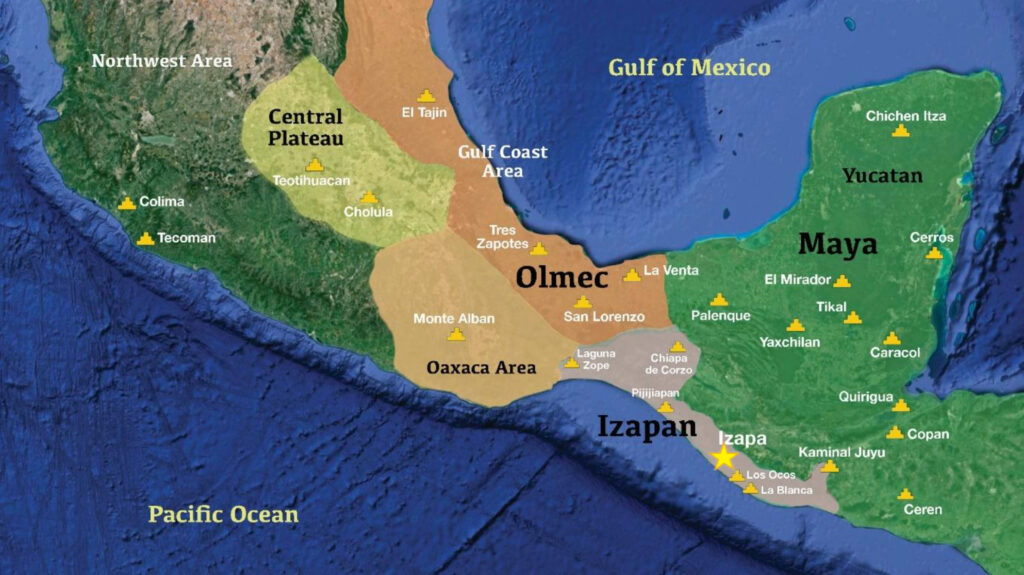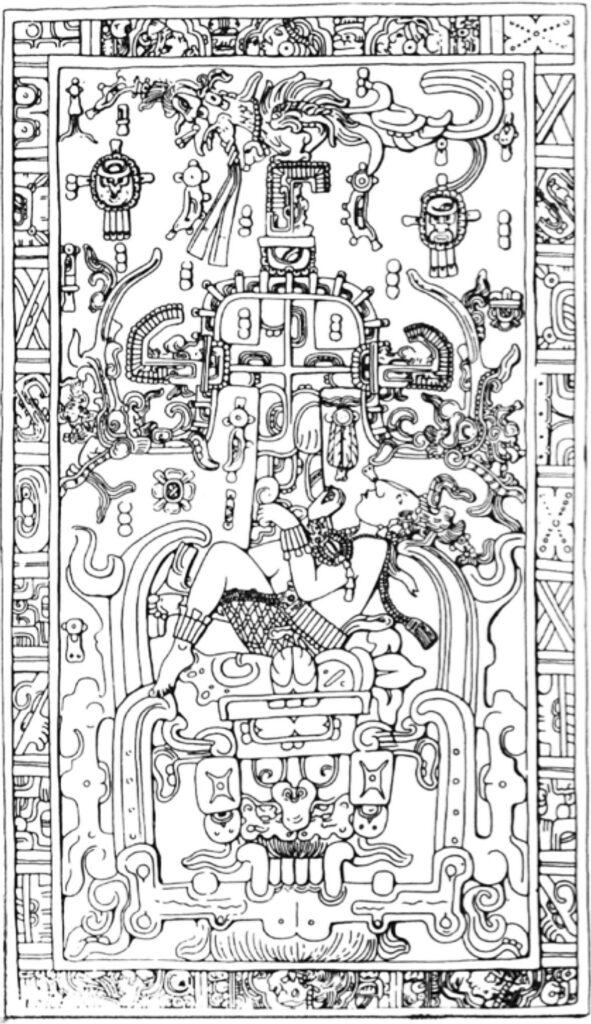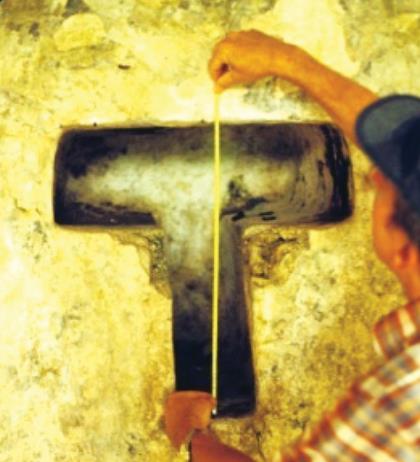
by Cheryl Norman (The legacy of V. Garth Norman lives on.)
Palenque (ca. 350 BC to 800 AD) is located near the Usumacinta River in the Mexican state of Chiapas, and is 150 meters (490 ft) above sea level. Palenque is a medium-sized site, smaller than Tikal, Chichen Itza, or Copán, but it contains some of the finest architecture, sculpture, roof comb and bas-relief carvings that the Mayas produced. It is estimated that less than 10% of the total area of the city is explored, leaving more than a thousand structures still covered by jungle. Palenque, north of Izapa, is at the same longitude as Izapa.
Art historian Marvin S. Cohodas analyzed the cosmological system at Palenque, involving the panels of the sun, the Cross, and the foliated Cross as sequential in the sun’s cyclic movement for agricultural ritual purposes. Panels also have directional associations with the equinoxes and solstices, just as occurs at Izapa. (Izapa Sacred Space 2015: 39) Palenque stands out among the Classic Maya in its low relief scenes that resemble Izapan chiastic symmetry, artistic composition and style. This reflects a renaissance of Izapan iconographic themes more than any other Mayan art. For instance, Izapan themes on Pacal’s sarcophagus lid include the central birth tree which symbolizes ascension, Pacal’s tree (see Fig. 4) is entwined by a double headed serpent (above his figure), a bird perched on top, and the double headed long-lipped serpent flanking its base.
The composition and theme of Pacal’s carving (Fig. 4) are distinctly rooted in the Izapan tradition, best manifest on Izapa Stela 5 “Tree of Life” carving. Due to its singular theme, it can only approach the grand scale of writing manifest on the Stela 5 summary stone at Izapa, but its beauty in expressing immortality is unsurpassed in Mesoamerican art. On this sarcophagus cover, Pacal’s left arm, foot to knee, and thigh to shoulder measure the Royal Babylonian (RB) cubit. (Izapa Stelae 12 and 50 have the theme of death which is unmistakably toward a subsequent heavenly ascension.) Other measurements reveal that the Royal Babylonian cubit was used in the Palenque architecture.
Some T-shaped windows in the Palace (Fig. 6) are 1 Royal Babylonian (RB) cubit high and 1 Royal Babylonian (RB) cubit wide.Others that differ may represent a different standard measurement or may have been the work of less skilled masons.
The precision carvings and drawings at Palenque made it easy to decipher measurements as well as to translate the Maya writing such as was done by Dr. Linda Schele (Fig. 3, see article “And it came to Pass”) This article is written from The Cubit Connection in Ancient World Migrations (2018: pp. 75 to 77) and Izapa Sacred Space: Sculpture Calendar Codex (2015: 249) both publications by V. Garth Norman.
Fig. 2 – Palenque is near the Usumacinta River (Sidon), Mexico where King Mosiah translated the Plates of Ether (Mosiah 8:5; 28)
Watch this video for more information on PALENQUE, MEXICO (226 BC to 800 AD)











